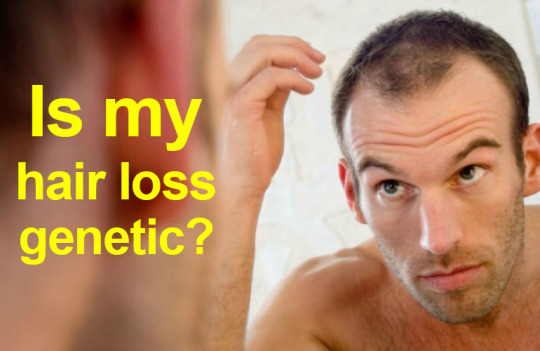This is another oft-asked question.
Many people want to believe that their hair loss is due to a disease and will be reversed completely by curing the disease.
That may be the case in some. Unfortunately, not in all.
I have found an easy way to help differentiate and explain the type of hair loss is by understanding the concept of pattern hair loss.
Androgenic alopecia or the commonest form of balding follows a pattern.
The hair loss starts in the temples, hairline and/or the crown. There will be variations, but it almost never effects the sides and the back of the scalp
Diseases usually do not follow the same pattern.
Some diseases where you may experience hair loss but which are not androgenic alopecia are -
* Alopecia areata, globalis and universalis . For further reading see this link https://en.wikipedia.org/wiki/Alopecia_areata
* Psoriasis . Additional pictures and information is available at https://www.psoriasis.org/home/
* Hormonal imbalances (especially thyroid).
* Lichen planus. Additional information and pictures available at https://www.dermnetnz.org/topics/lichen-planus/
* Post chemotherapy, or due to injury (burn, surgical or accidental)
* Trichotillomania. Additional information about this unusual condition can be found at https://en.wikipedia.org/wiki/Trichotillomania
* Traction alopecia (due to sustained and long-term traction on the hair roots). Two commonest subgroups affected by this are Black women wearing tight braids and Sikh gentlemen wearing hair tightly under their turban.
There are many more rarer causes and maybe veteran readers will be able to add them to this thread. But to keep this short, I will desist. Sufficient that you get a brief idea of the types of hair loss.
A good first step is to contact your family physician as the first step. He should be able to rule out or advise tests for hair loss due to reasons other then androgenic alopecia.
Many people want to believe that their hair loss is due to a disease and will be reversed completely by curing the disease.
That may be the case in some. Unfortunately, not in all.
I have found an easy way to help differentiate and explain the type of hair loss is by understanding the concept of pattern hair loss.
Androgenic alopecia or the commonest form of balding follows a pattern.
The hair loss starts in the temples, hairline and/or the crown. There will be variations, but it almost never effects the sides and the back of the scalp
Diseases usually do not follow the same pattern.
Some diseases where you may experience hair loss but which are not androgenic alopecia are -
* Alopecia areata, globalis and universalis . For further reading see this link https://en.wikipedia.org/wiki/Alopecia_areata
* Psoriasis . Additional pictures and information is available at https://www.psoriasis.org/home/
* Hormonal imbalances (especially thyroid).
* Lichen planus. Additional information and pictures available at https://www.dermnetnz.org/topics/lichen-planus/
* Post chemotherapy, or due to injury (burn, surgical or accidental)
* Trichotillomania. Additional information about this unusual condition can be found at https://en.wikipedia.org/wiki/Trichotillomania
* Traction alopecia (due to sustained and long-term traction on the hair roots). Two commonest subgroups affected by this are Black women wearing tight braids and Sikh gentlemen wearing hair tightly under their turban.
There are many more rarer causes and maybe veteran readers will be able to add them to this thread. But to keep this short, I will desist. Sufficient that you get a brief idea of the types of hair loss.
A good first step is to contact your family physician as the first step. He should be able to rule out or advise tests for hair loss due to reasons other then androgenic alopecia.

Comments
Post a Comment